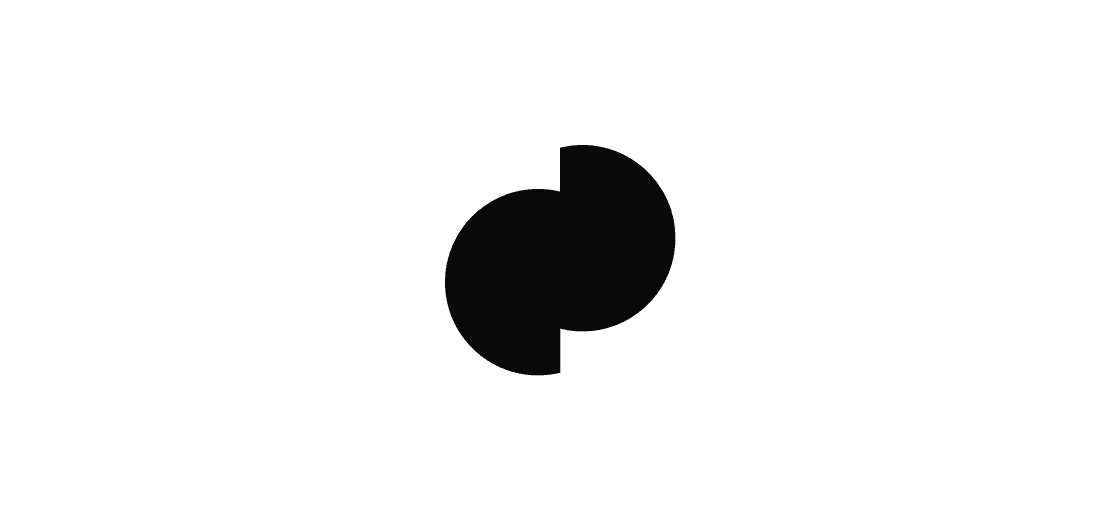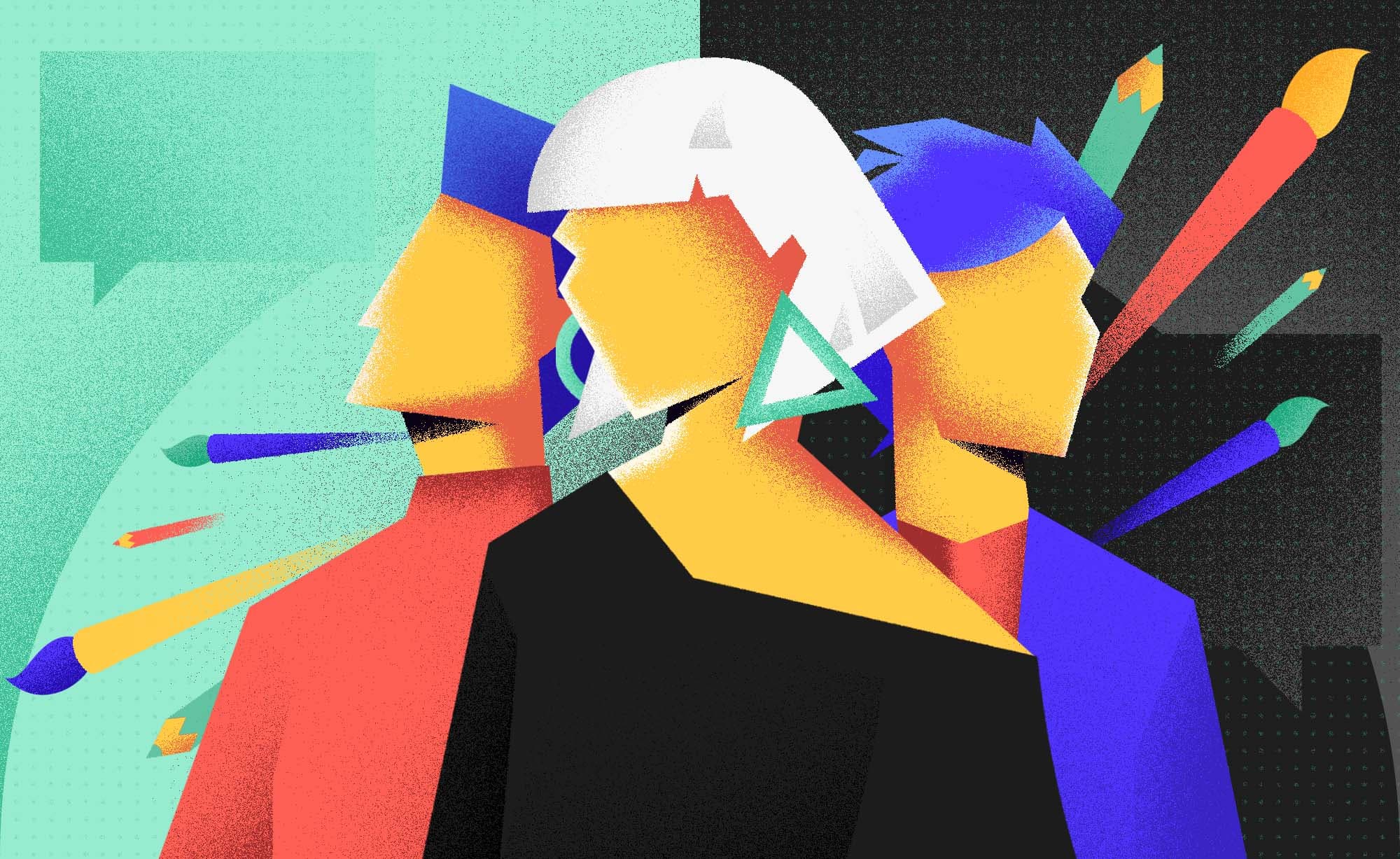Everything I've Learned as a Designer – Part 2
Jake Dragash
2023-02-06
8min
Design
Unlock 9 Pro Tips for Professional Growth as a Designer! In Part 2 of our "What I've Learned" series, we delve into key insights to boost your career in design.
Welcome to part two of this series! Feel free to read the previous post in case you missed it and let’s jump into a few more lessons learned.
You Can’t Do It On Your Own
Teamwork is everything.
I can’t for the life of me remember if this was from a Dave Grohl documentary or what — but a musician being interviewed once said something like: Yeah you can make your bedroom a studio and record every instrument on your own; you definitely can make music by yourself. But where’s the fun in that?
I think he was onto something.
Of course you can do things alone. For some things, it just might make more sense. But there’s nothing like working with others.
Why?
Because other people will teach you things you never would have learned on your own. Other people will make you realize just how much you have left to go. Other people might even drive you a little crazy, but other people in the end will bring out the best in you — they’ll encourage you and let you know you matter.
Other people are in fact, other people. They aren’t you.
And that’s brilliant, because that means they see things differently, think differently, and have different ideas. And when you work together truly magical things can happen.
In short, don’t under-appreciate your teammates.
Do What You Say You Will
We like friends who are thoughtful. Friends who show up on time, who pay you back, who consider your obligations before inviting themselves over.
These aren’t conditions to friendship, but a good friendship considers these things, because a good friendship means to care.
With work it’s the same.
We like working with people we can rely on. And if others can rely on you — they’ll like working with you too. You know the phrase, “Underpromise and overdeliver.” It’s a journey to put into practice, but boy does it go a long way.
Doing what you say you will can take you places, because there are just too many people who don’t even do that.
Be Mindful of Other People’s Time
We are all busy and we all have limited bandwidth. Before setting up a call or asking for someone’s time — think about the job they do and what their day looks like. If you have access to their calendar, double check you are taking their schedule into consideration.
People’s time is valuable — so make your meetings count.
I was once on this sales call with a potential client. As usual, a time was scheduled and a meeting agenda was established. Come time for the call — we slowly realized the amounts of condescension and unprofessionalism that began to exude from this client. In fact we probably realized too slowly.
With the meeting going way past when it should have ended, we had no other choice but to kindly ask the call be ended.
These folks clearly did not care about our time.
Which in turn told us exactly what else they wouldn’t value — our work.
It’s a call like that, that solidified in me the principle that people’s time matters.
Be Patient
One thing that’s greatly helped me navigate being a designer is patience.
I don’t have a secret recipe to getting better at being patient other than to practice doing it consistently. Practice it in meetings; during 1:1s; while reading a book; while figuring out a UX problem; during a water cooler talk; while being stressed out; or even while listening to a client.
Patience is really the only way to do quality design work, and you can’t hack patience.
The inevitable time will come when you have to sit down with your thoughts and think.
A term in psychology I’m sure you’ve heard before is flow. If you’re not familiar with it, it’s the describing of a state of total immersion in an activity. And in this state of immersion your body and mind are in tune. You can tend to lose a sense of time and space, and in this state you really can achieve a level of clarity and focus you wouldn’t otherwise.
Flow has always been helpful for me in designing because it’s been helpful to me in other areas too — like in writing music.
Learn Design Principles
Pick up a book that teaches proven design principles like Universal Principles of Design or 100 Things: Every Designer Needs to Know About People.
Try to trust your gut less (at first) and try more to analyze and question why something is or isn’t functioning in a given design. (Don’t worry, over time “feel” will develop on its own.)
Avoid saying “I like x.” and instead practice saying, “X seems to work because it solves problem y.”
Internalize the principles you learn and practice thinking about each problem through the lens of best practices and the psychology behind how people perceive the products they use.
Take a Quality Design Course
There are a ton of excellent and free materials online these days — from YouTube videos to e-books. But if you can, I’d highly encourage you to look into a quality paid course. Taking advantage of your company’s education budget can be a great way to get a hold of one, because in the long run the investment is so worth it.
Free resources are great for learning a new tip or jumping into the basics of an area of design you aren’t familiar with. They are also great just to get other designers’ opinions.
But the difference in a paid resource I believe comes down to structure, focus and quality. A good course can often be created by an individual with years of experience — and that distillation of knowledge is invaluable.
I think you will learn far more in a shorter amount of time from a course like this than you would soaking in bits and pieces from various sources. A course can really boost your skills with comprehensive knowledge and insight.
Read a book on Design
Picking up a design book can be highly beneficial. Get your feet wet with something like How Design Makes the World or take a journey through the wonderful overview of UX’s history in User Friendly.
Unfortunately, just reading books won’t make you a better designer — but I do believe it’ll help in better understanding your own area of expertise. At least it’s helped me.
You’ll also learn things you probably wouldn’t have discovered on your own and be able to cross reference information via footnotes and other means in order to get a better understanding of the big picture.
Plus, as a designer I just find it fun so I’m assuming you probably will too!
Learn how Businesses are Run
Having even a basic grasp of the goals and workings of a business is something I believe every designer should aim for.
When working with a client, learn about their business model — who are their target customers, how will they measure success, and how do they plan to actually make money. Additionally, what are their internal values and what are their established workflows?
Knowing more about what’s in it for the stakeholders will make your approach to solving their problems with your design work that much easier.
If you are a full-time employee, find out how the company you work for is run. How are they finding clients, where does it seem money is being invested, and how does your role fit within that model? How is your company investing in you and what are you doing to bring them value?
Taking note of looking at things from a business perspective will not only help you strategize your work and career — it’ll also up your communication skills twofold to boot!
Stay Informed
Principles don’t change. Tools and methods do. So try and stay up to date as best you can with the tools you use.
If a new feature comes out, take some time to learn how to use it. If you use a tool on a daily basis — learn its shortcuts. In general, find other ways to speed up your workflow.
Research new ways of approaching your design process. And don’t be afraid to challenge what everyone says is “the process”.
Remember how context matters? Methods depend on context too! How we approach design can and should change as we discover better ways to solve problems.
Be in the loop of trends — but don’t follow them just because others are.
Use social media as a tool and follow designers smarter than you on Twitter.
Leverage curators like UX Collective or Sidebar to read up on what the community is sharing and writing about.
And finally — don’t forget to enjoy what you’re doing.
Looks like that’s all I have for now. What are some of the most important things you’ve learned as a designer?
A dose of (Design) Dopamine
Updates and resources
In-depth guides
Quality content for free























